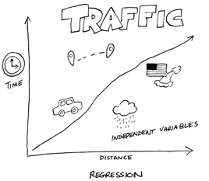Supervised and unsupervised machine learning are two different techniques that you discover insights from your data.


I have worked with several organizations over the years helping them implement machine learning, often after failed attempts to do so on their own. It is no surprise that the organizations that succeed generally do everything right and those that fail often do so as a result of making common mistakes. In this post, I present machine learning dos and don’ts to increase your chances of achieving a successful launch of your machine learning initiative.
Before you even start to introduce machine learning to your organization, you need to find a way to connect your organization’s business needs to machine-learning technology. Otherwise, you are likely to put a program in place and assemble a team with the requisite technical expertise only to find them spending all their time just playing around with the technology.
To avoid this common mistake, take the following steps:
Keep in mind that the best technology isn't necessarily machine learning. Your organization may be able to answer most questions and solve most problems and gain valuable insights with the use of a data warehouse and good business intelligence (BI) software. It may not need a dedicated machine-learning team.
Machine learning often involves supervised learning — feeding the machine labeled data, so the machine can learn the connection between the labels and the data inputs. A common mistake is to mix some of the training data into the test data, which is often tempting when the availability of relevant data is limited. To avoid this mistake, before you engage in supervised learning, create two separate data sets:
If, after training the machine, you mix some of your training data in with your test data, you won't have a clear picture of how well the machine performed on the test. It would be like giving students a sheet of paper with some of the test questions and their correct answers just before they take the test. The test results wouldn't accurately represent what they had learned or where they were struggling.
Algorithms and functions are the engines that drive machine learning, and data is the fuel. Although the machine does the learning and ultimately creates the model that the computer follows to perform the desired task, it is up to you to construct a “brain” that enables the learning process. The building blocks you have to work with are algorithms and functions:


When you are building a machine that can learn, you need to be familiar with a wide variety of algorithms and functions, so you will know which ones to choose and how to arrange them.
After training a machine, you may be tempted to show it off — to demonstrate that your model can actually do something useful and perhaps even amazing. You collect your test data and schedule a presentation to demonstrate the power and precision of your new machine-learning model.
Whoa! This irrational exuberance can end in disaster, maybe not during the presentation but afterward, when someone in your audience uses the model and it misses the mark.
You can avoid the potential embarrassment by running your new model on test data first, so the machine can adjust the model, if necessary, to improve its accuracy. Several rounds of testing (with different test data) and adjustments may be required before your model is ready for prime time.
Of course, there are other pitfalls that you would be wise to avoid when starting out with machine learning, but by steering clear of the common pitfalls covered in this post, you will be far ahead of the game!
Supervised and unsupervised machine learning are two different techniques that you discover insights from your data.
Machine learning regression analysis algorithms used to predict continuous trends in your data.
Machine Learning success is often about picking the right machine learning algorithms. This often comes down to key ML algorithm decisions from your data science team.